Highlights

SPECIAL TOPIC—Principles and applications of quantum optics·COVER ARTICLE
COVER ARTICLE
2025, 74 (24): 240301.
doi: 10.7498/aps.74.20251454
Abstract +
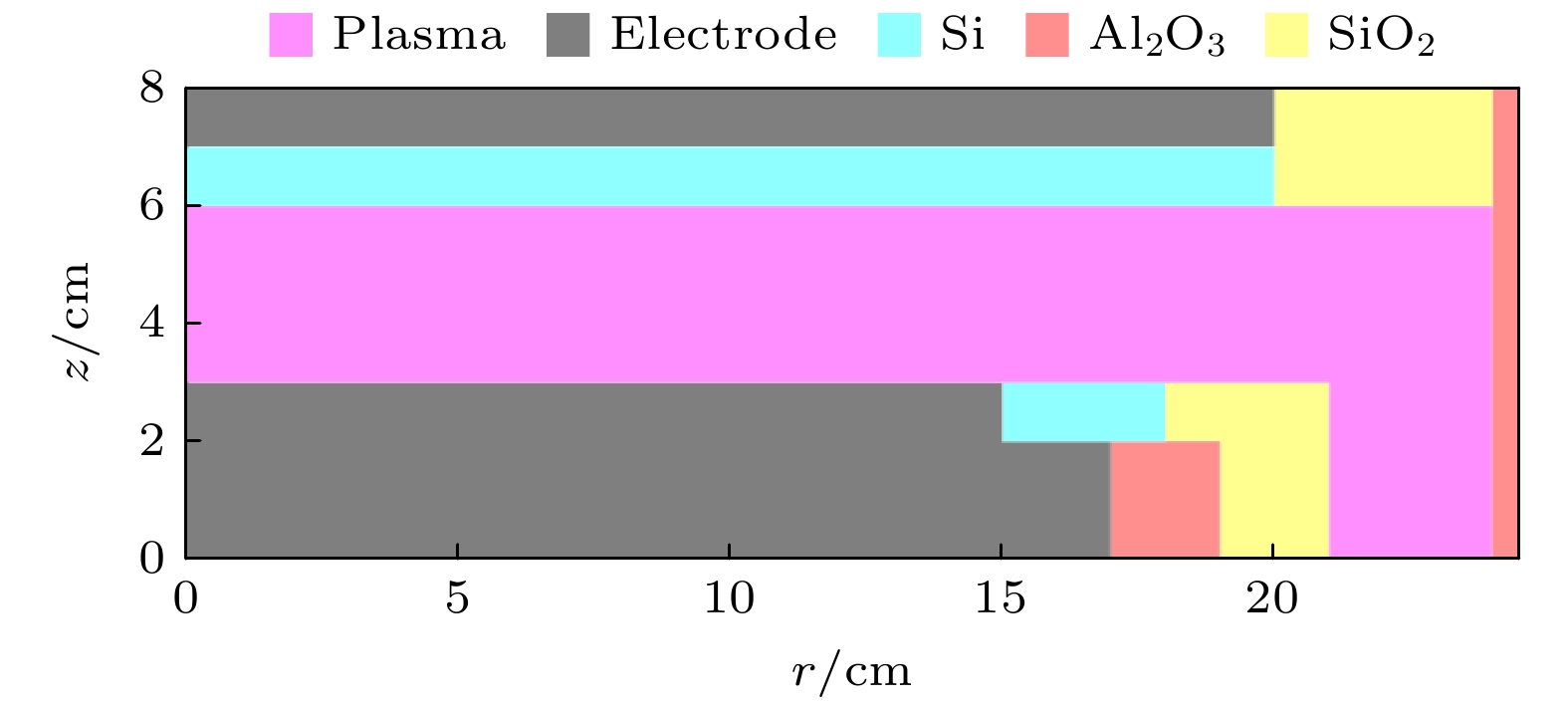
SPECIAL TOPIC—Non-equilibrium transport and active control strategy in low-temperature plasmas
COVER ARTICLE
2025, 74 (23): 235201.
doi: 10.7498/aps.74.20251121
Abstract +
Capacitively coupled plasma sources, which are widely used in the etching and deposition processes of semiconductor manufacturing, have the advantages of simple structure, low cost, and the ability to generate large-area uniform plasma. To meet the requirements of advanced processes, fluid models are usually required to simulate plasma sources and optimize their important plasma parameters, such as density and uniformity. In this work, an independently-developed capacitively coupled plasma fast simulation program is employed to conduct three-dimensional fluid simulations of a dual-frequency capacitively coupled Ar/CF4 plasma source, with the aims of verifying the effectiveness of the program and investigating the influence of discharge parameters such as gas pressure, high and low-frequency voltages, low frequency, and background component ratios. The simulation results show that the program has an extremely high simulation speed. As the low-frequency voltage increases, the plasma density initially remains approximately constant and then significantly increases, while the plasma uniformity initially rises and then significantly decreases. In this process, the γ-mode heating of the low-frequency source increases and becomes the dominant mode in replace of the α-mode of high-frequency source. As the lower frequency increases, plasma density initially remains approximately constant and then slightly increases, while the plasma uniformity does not change much. this is because the γ-mode heating is frequency independent, while the α-mode heating is much lower than high-frequency source. As the high-frequency voltage increases, the plasma density significantly increases, while the plasma uniformity initially rises and then significantly decreases, the α-mode heating of high-frequency source is significantly enhanced in this process. As the pressure increases, the plasma density significantly increases, and the plasma uniformity also rises significantly, the reason is the more complete collision between particles and background gases. As the Ar ratio in background gases increases, the plasma density changes slightly, the density of Ar-related particles generally increases and the density of CF4-related particles generally decreases, although there are some non-monotonic changes in particle densities, which reflects the mutual promotion between some ionization and dissociation reactions.
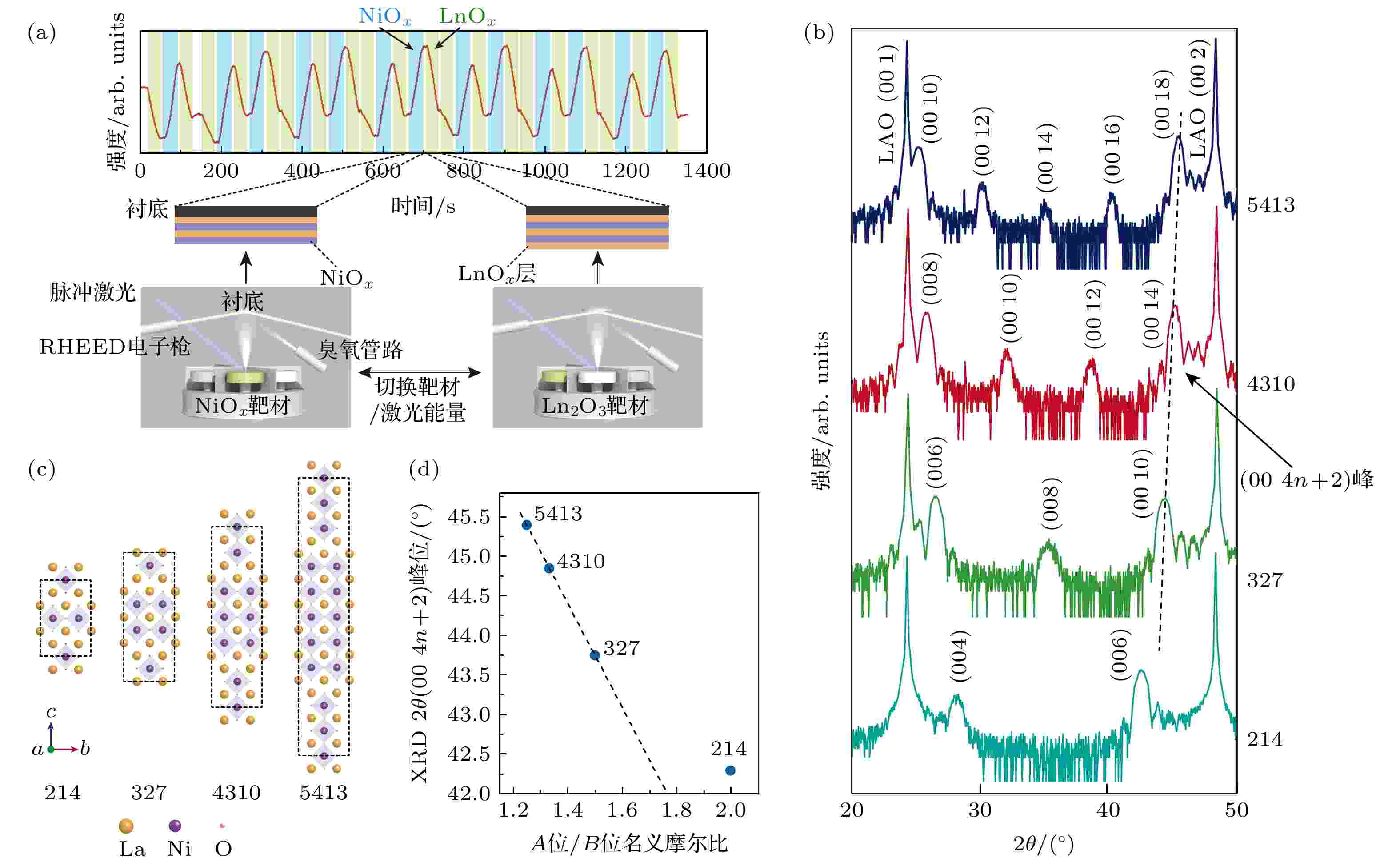
SPECIAL TOPIC—Research progress on nickelate superconductors·COVER ARTICLE
COVER ARTICLE
2025, 74 (22): 227403.
doi: 10.7498/aps.74.20251080
Abstract +
The discovery of ambient-pressure nickelate high-temperature superconductivity provides a new platform for further exploring the underlying superconducting mechanisms. However, the thermodynamic metastability of Ruddlesden-Popper nickelates Lnn+1NinO3n+1 (Ln = lanthanide) poses significant challenges for precise control over their structures and oxygen stoichiometry. This study establishes a systematic approach to growing phase-pure, high-quality Ln3Ni2O7 thin films on LaAlO3 and SrLaAlO4 substrates by using gigantic-oxidative atomic-layer-by-layer epitaxy. The films grown under an ultrastrong oxidizing ozone atmosphere are superconducting without further post-annealing. Specifically, the optimal Ln3Ni2O7/SrLaAlO4 superconducting film exhibits an onset transition temperature (Tc,onset) of 50 K. Four critical factors governing the crystalline quality and superconducting properties of Ln3Ni2O7 films are identified as follows. 1) Precise cation stoichiometric control suppresses secondary phase formation. In an Ni-rich sample (+7%), the thin film forms an Ln4Ni3O10 secondary phase, and the R-T curve correspondingly exhibits metallic behavior. In contrast, an Ni-deficient sample forms an Ln2NiO4 secondary phase, with its R-T curve indicating insulating behavior over the entire temperature range. 2) Complete atomic layer-by-layer coverage minimizes stacking faults. Deviation from ideal monolayer coverage induces in-plane atomic number mismatch, which directly triggers out-of-plane lattice collapse or uplift near bulk-equilibrium positions. 3) Optimized interface reconstruction can improve the atomic arrangement at the interface. This can be achieved through methods such as annealing the SrLaAlO4 substrate or pre-depositing a 0.5-unit-cell-thick Ln2NiO4-phase buffer layer, which enhances the energy difference between the Ln-site and Ni-site layers to promote proper stacking. 4) Accurate oxygen content regulation is essential for achieving a single superconducting transition and high Tc,onset. Although the under-oxidized sample demonstrates a relatively high Tc,onset (50 K), it displays a two-step superconducting transition. Conversely, the over-oxidized sample exhibits a reduced Tc,onset of 37 K and similarly manifests a two-step transition. These findings provide valuable insights into the layer-by-layer epitaxy growth of diverse oxide high-temperature superconducting films.

Abstract +
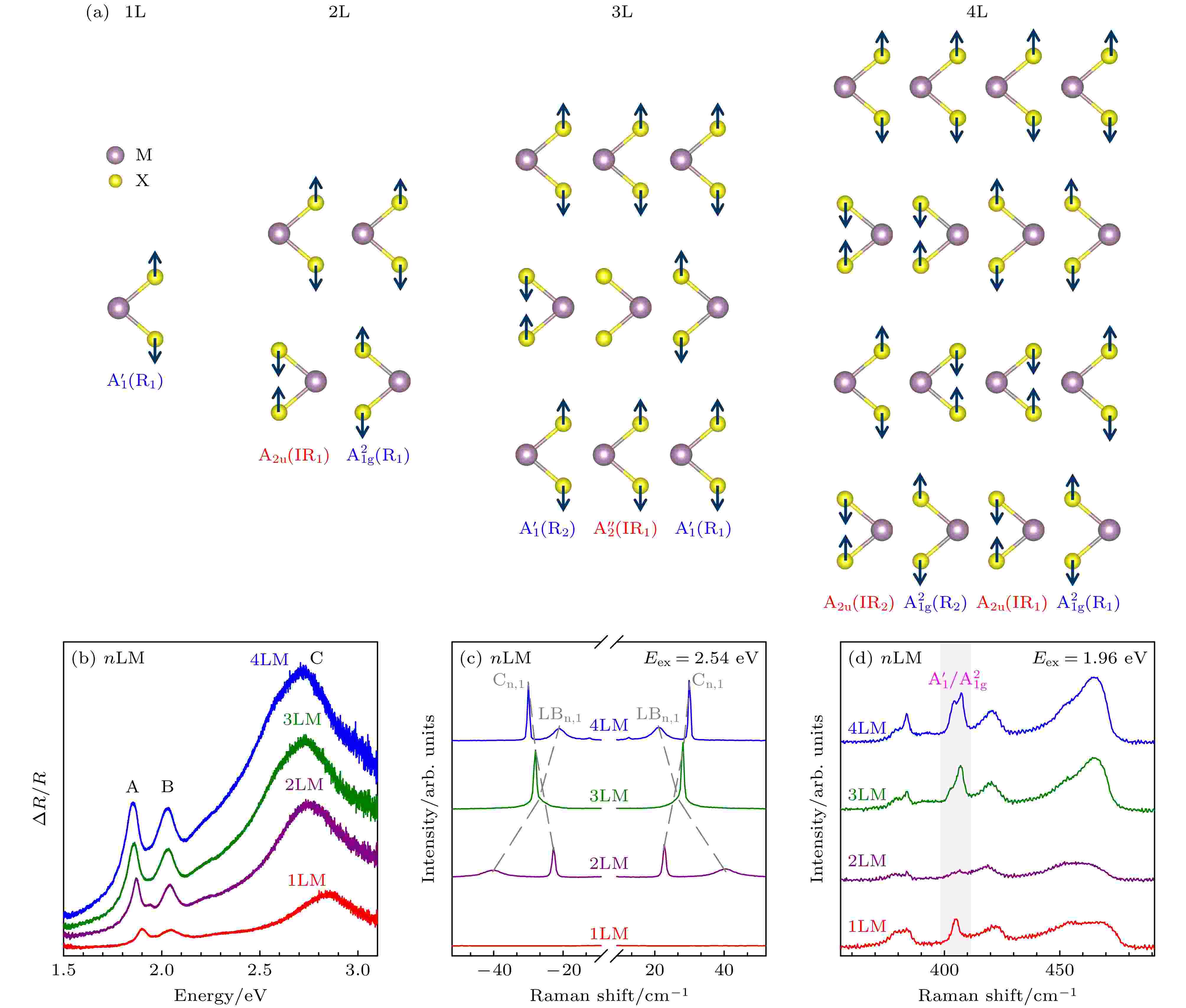
Abstract +

Abstract +
Refractory multi-principal element alloys (RMPEAs)have become a hotspot in materials science research in recent years due to their excellent high-temperature mechanical properties and broad application prospects. However, the unique deformation mechanisms and mechanical behaviors of the NbTaTiZr quaternary RMPEA under extreme conditions such as high temperature and high strain rate are still unclear, limiting its further design and engineering applications. In order to reveal in depth the dynamic response of this alloy on an atomic scale, this study develops a high-accuracy machine learning potential (MLP) for the NbTaTiZr quaternary alloy and combines it with large-scale molecular dynamics (MD) simulations to systematically investigate the effects of crystallographic orientation, strain rate, temperature, and chemical composition on the mechanical properties and microstructural evolution mechanisms of the alloy under compressive loading. The results show that the NbTaTiZr alloy exhibits significant mechanical and structural anisotropy during uniaxial compression. The alloy exhibits the highest yield strength when loaded along the [111] crystallographic direction, while it shows the lowest yield strength when compressed along the [110] direction, where twinning is more likely to occur. Under compression along the [100] direction, the primary deformation mechanisms include local disordering transitions and dislocation slip, with 1/2$ \left\langle{111}\right\rangle $ dislocations being the dominant type. When the strain rate increases to 1010 s–1, the yield strength of the alloy is significantly enhanced, accompanied by a notable increase in the proportion of amorphous or disordered structures, indicating that high strain rate loading suppresses dislocation nucleation and motion while promoting disordering transitions. Simulations at varying temperatures indicate that the alloy maintains a high strength level even at temperatures as high as 2100 K. Compositional analysis further indicates that increasing the atomic percentage of Nb or Ta effectively enhances the yield strength of the alloy, whereas an increase in Ti or Zr content adversely affects the strength. By combining MLP with MD methods, this study elucidates the anisotropic characteristics of the mechanical behavior and the strain rate dependence of disordering transitions in the NbTaTiZr RMPEA under combination of high strain rate and high temperature, providing an important theoretical basis and simulation foundation for optimizing and designing novel material under extreme environments.
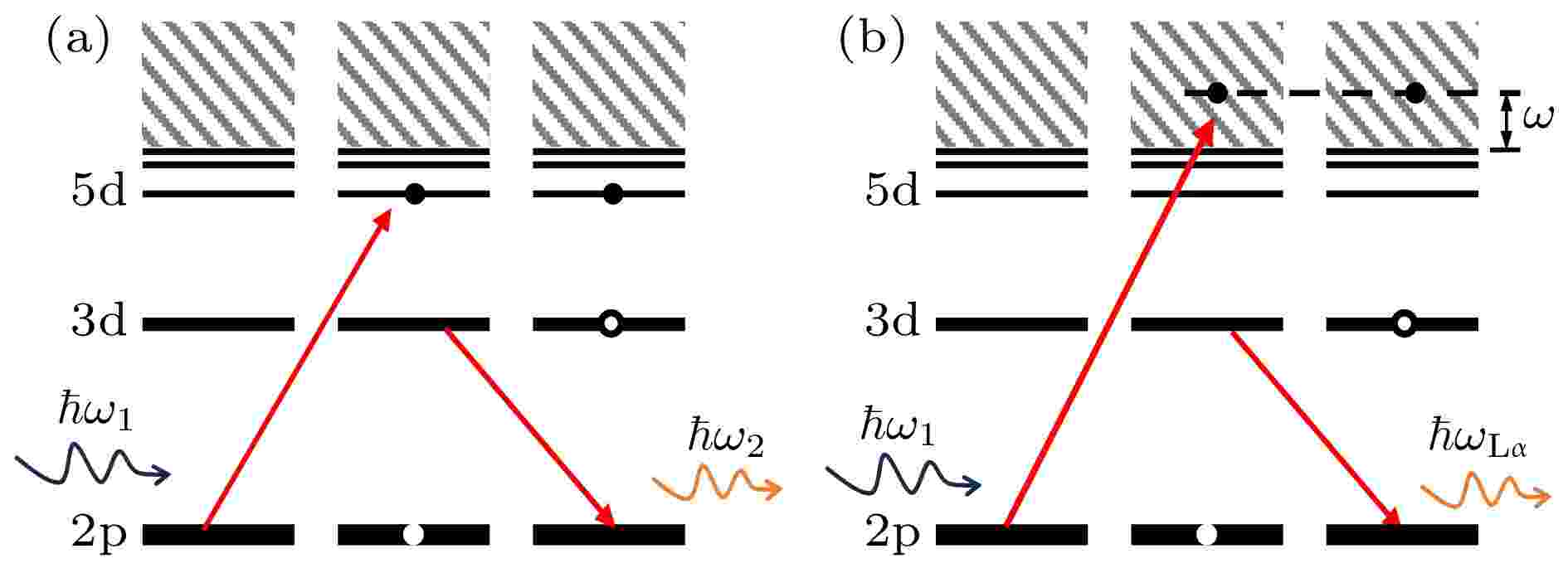
Abstract +
With the advancement of synchrotron and free-electron laser, X-ray quantum optics has emerged as a novel frontier for exploring light-matter interactions at high photon energies. A significant challenge in this field is achieving well-defined two-level systems through atomic inner-shell transitions, which are often hindered by broad natural linewidths and local electronic structure effects. This study aims to explore the potential of tungsten disilicide (WSi2) as a two-level system for X-ray quantum optics applications. Utilizing high-resolution resonant inelastic X-ray scattering (RIXS) near the W-L3 edge, in this work, the white line of bulk WSi2 is experimentally distinguished, overcoming the spectral broadening caused by short core-hole lifetime. The measurements are conducted by using a von Hamos spectrometer at the GALAXIES beamline of the SOLEIL synchrotron. The results reveal a single resonant emission feature with a fixed energy transfer, confirming the presence of a discrete 2p-5d transition characteristic of a two-level system. Additional high-resolution XAS spectra, obtained via high energy resolution fluorescence detection method and reconstructed from off-resonant emission (free from self-absorption effect for bulk WSi2 sample) method, further support the identification of a sharp white line. These findings demonstrate the feasibility of using WSi2 as a model system in X-ray cavity quantum optics and establish RIXS as a powerful technique to resolve fine inner-shell structures.
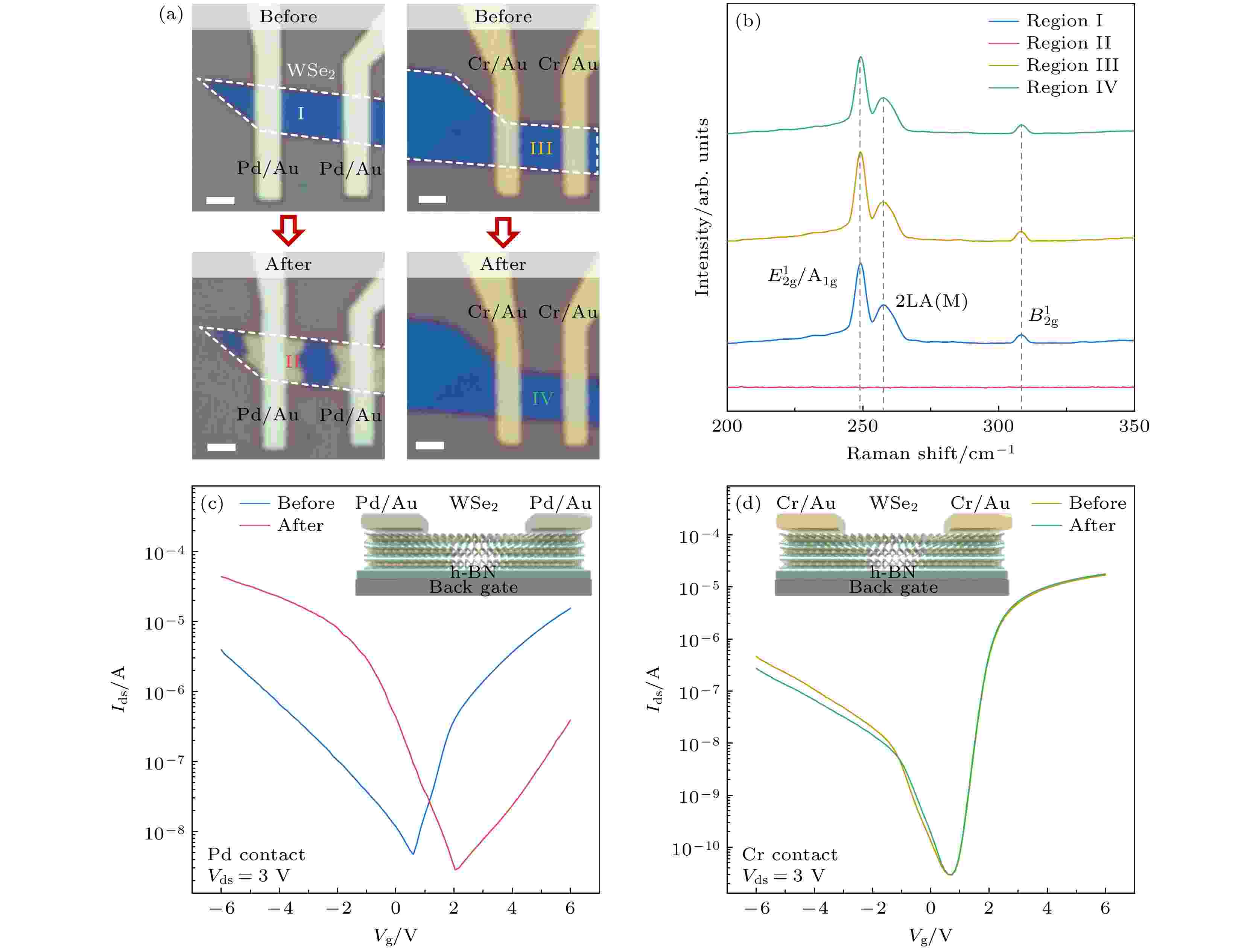
SPECIAL TOPIC—2D materials and future information devices·COVER ARTICLE
COVER ARTICLE
2025, 74 (17): 178501.
doi: 10.7498/aps.74.20250648
Abstract +
Two-dimensional (2D) semiconductor materials exhibit tremendous potential for post-Moore integrated circuits due to their unique physical properties and superior electrical characteristics. However, critical challenges in polarity modulation and complementary integration have significantly hindered the practical applications of 2D materials. The development of compatible polarity-modulation techniques has emerged as a critical step in achieving device functional integration for constructing 2D materials-based complementary circuits. This study innovatively proposes a one-step-annealing-driven polarity-modulation strategy for 2D semiconductors. It is demonstrated in this study that the conduction behavior of Pd-contacted WSe2 transistors transitions from n-type to p-type dominance after annealing, while Cr-contacted devices maintain n-type dominance. Based on this polarity-modulation strategy, by selectively fabricating source and drain electrodes with different metal materials (Pd and Cr) on the same WSe2, combined with a one-step annealing process, the monolithic integration of complementary transistors is achieved, thereby realizing inverter function through device interconnection. The fabricated inverters exhibit a high voltage gain of 23 and a total noise margin of 2.3 V(0.92 Vdd) at an applied Vdd of 2.5 V. This work not only establishes a novel technical pathway for polarity modulation in 2D materials but also provides crucial technological support for developing 2D semiconductor-based complementary logic circuits.

SPECIAL TOPIC—Order tuning in disordered alloys·COVER ARTICLE
COVER ARTICLE
2025, 74 (16): 166101.
doi: 10.7498/aps.74.20250563
Abstract +
The engineering applications of amorphous alloys are largely restricted by structural relaxation. Notably, the dissipative component of cyclic loading dominates the thermodynamic energy in practical applications of amorphous alloys. Mechanical rejuvenation, achieved through cyclic loading, offers an effective solution to this problem. In this study, we systematically investigate the deformation characteristics and rejuvenation mechanism of Pd20Pt20Cu20Ni20P20 amorphous alloy under mechanical cycling using dynamic mechanical analysis (DMA). By employing a two-phase Kelvin model and continuous relaxation time spectrum, we elucidate the interplay between mechanical deformation and energy dissipation during cyclic loading. The experimental results demonstrate that the strain rate increases significantly with the intensity of mechanical cycling, indicating enhanced dynamic activity in the glassy matrix. At higher cycling intensities, anelastic deformation is promoted, activating a broader spectrum of defects and amplifying dynamic heterogeneity. Through differential scanning calorimetry (DSC), we establish a quantitative correlation between deformation and energetic state, revealing that rejuvenation originates from internal heating induced by anelastic strain. A comparative analysis with creep deformation reveals that mechanical cycling exhibits a superior rejuvenation potential, attributed to its ability to periodically excite multi-scale defect clusters and sustain non-equilibrium states. The key findings of this work include: 1) Deformation mechanism: Cyclic loading enhances atomic mobility and facilitates deformation unit activation; 2) Energy landscape: The enthalpy change (ΔH) measured by DSC provides a direct metric for rejuvenation efficiency; 3) Dynamic heterogeneity: Mechanical cycling broadens the relaxation time spectrum, reflecting increased dynamic heterogeneity.
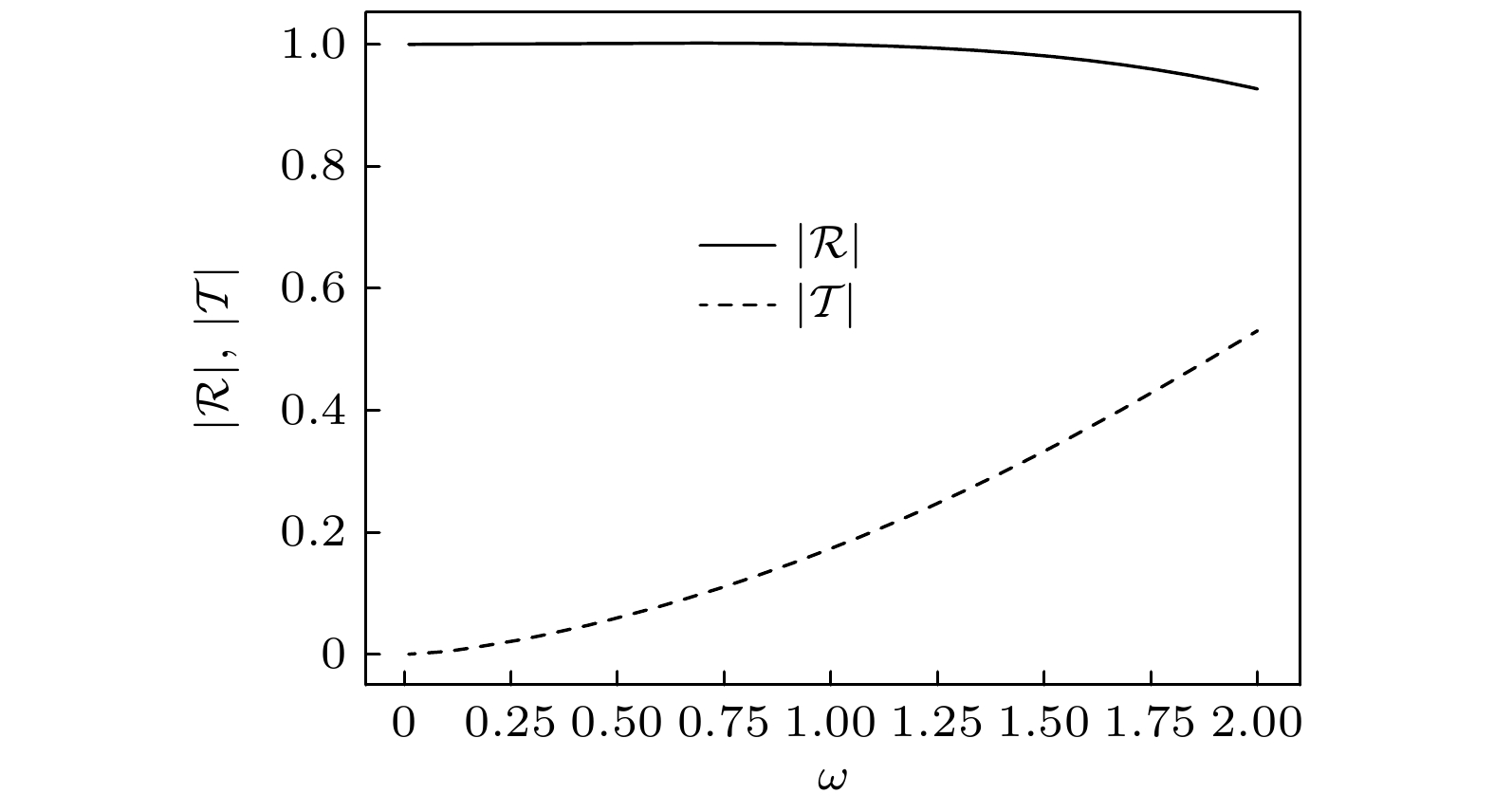
Abstract +
This paper conducts numerical studies on superradiance and Hawking radiation of a specific rotating acoustic black hole model characterized by parameters A and B, within the framework of analogue gravity. The standard radial wave equation for scalar perturbations in the effective metric of this model is solved numerically by using an adaptive Runge-Kutta method with tortoise coordinates; this approach necessitates careful numerical inversion of the coordinate transformation near the horizon via a root-finding algorithm. By imposing appropriate boundary conditions, we extract the reflection coefficient $\mathcal{R}$ and transmission coefficient $\mathcal{T}$ in a range of frequencies ω. Our results clearly demonstrate superradiance, with the reflectivity $|\mathcal{R}|^2$ exceeding unity for $\omega < m\varOmega_{\rm{H}} = 1$ (where $m=-1$ and $\varOmega_{\rm{H}}=-1$), which confirms energy extraction from the rotating background. The high accuracy of our method is validated by the flux conservation relation, $|\mathcal{R}|^2 + $$ [(\omega - m\varOmega_{\rm{H}})/\omega]|\mathcal{T}|^2 = 1$, which typically has a numerical precision of $ 10^{-8}$. Furthermore, using the derived Hawking temperature and the rotation modified Bose-Einstein distribution, we calculate the Hawking radiation power spectrum $P_\omega$, and use the numerically obtained transmission coefficient $|\mathcal{T}|^2$ as the greybody factor of the model. A prominent feature of $P_\omega$ is its sharp enhancement (or divergence) as ω approaches the threshold $m\varOmega_{\rm{H}}$ from above, which is a characteristic directly related to the denominator of the Bose-Einstein factor. This research also reveals that superradiant amplification and Hawking spectrum characteristics are significantly dependent on the specific values of flow parameters A and B, even when the superradiant threshold $m\Omega_H$ is kept unchanged. This detailed numerical study provides quantitative results for the scattering and radiation properties of this model, and also for strong support for the analogue gravity framework.

- 1
- 2
- 3
- 4
- 5
- ...
- 14
- 15










